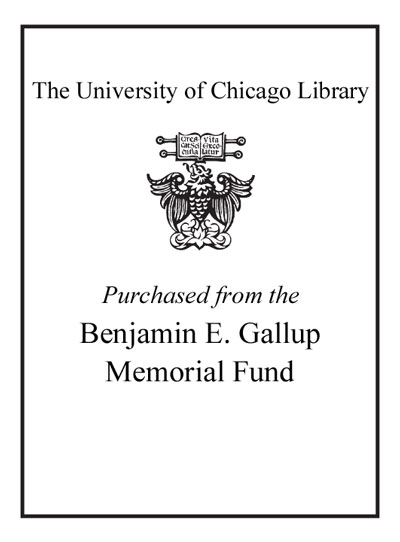President Lyndon Johnson formed the National Advisory Commission on Civil Disorders in late July 1967 to investigate the causes of the riots that had engulfed black neighborhoods in more than one hundred cities that summer, and in the three preceding years. It held closed hearings from August to December, with over 130 witnesses, including Martin Luther King, Robert F. Kennedy, Stokely Carmichael, and Chicago-based community organizer Saul Alinsky. Members visited eight cities and did field surveys in twenty-three others. In its March 1968 report, the Kerner Commission, as it was informally called, famously warned that if conditions were not changed, the nation would be "moving toward two societies, one black, one white--separate and unequal." It was clear that the nation could no longer hold the "wolf by the ear," as in Thomas Jefferson's evocative description of the American dilemma. A critical point had been reached. Despite legislative and judicial victories over Jim Crow in the South, the reduction of open racial discrimination in the North, the softening of white racial attitudes, and years of economic growth, the black urban condition appeared to be deteriorating. Racial segregation was expanding, whites continued to resist the passage of even the most minimal fair housing laws, and the War on Poverty seemed unable to arrest rising levels of unemployment and concentrated poverty in black neighborhoods. As jobs left the city, young blacks in particular were trapped in overcrowded and inadequate schools, with rapidly diminishing hope of stable employment and upward mobility. The Kerner Report responded with appropriate urgency. One suggested alternative to the status quo, the authors noted, was to concentrate massive public and private resources on inner-city communities, and to abandon metropolitan desegregation as an unobtainable goal. This "enrichment" approach--often referred to at the time as "gilding the ghetto"--had support from across the political spectrum (and across racial lines), but the commission nonetheless opposed it. If implemented alone, commission members warned, the policy would have "ominous consequences for our society," because "equality cannot be achieved under conditions of nearly complete separation." It involved "choosing a permanently divided country" while doing little to "arrest the deterioration of life in central city ghettos." While "large-scale improvement in the quality of ghetto life" was essential, this could be only an "interim strategy." Metropolitan segregation threatened to further isolate black ghetto residents politically and economically, continually undermining any progress that massive investments in their neighborhoods might create. If the primary goal was to create a "single society, in which every citizen will be free to live and work according to his capabilities and desires, not his color," the Kerner Report concluded, metropolitan desegregation and ghetto enrichment had to be undertaken together and with equal vigor. Neither could succeed without the other. Enrichment had to be paired with "substantial Negro movement out of the ghettos" and the elimination of all barriers to free choice in employment, education, and housing. Federal housing programs needed to encourage or directly construct millions of low- and moderate-income units in the suburbs, and Congress needed to pass a strong fair housing law that included single-family housing. America had to affirmatively open up the suburbs. "Integration," the Kerner Commission concluded, "is the only course which explicitly seeks to achieve a single nation." The nation could no longer maintain the illusion that economic growth, nondiscrimination laws, and goodwill would unwind the racial status quo. President Johnson made his choice when he refused to even acknowledge the report. After a brief flurry of hopeful judicial, administrative, and legislative action between 1968 and 1975, the nation largely rejected it as well. The issue of metropolitan segregation disappeared from national politics, along with the idea that there might be something fundamentally wrong with existing conditions, something that required strong governmental action. The issue was replaced by a belief that everything reasonable had been done, and that civil rights policies might have gone so far as to be unfair to whites. Segregation by class as well as race remains a fundamental fact of life in the nation's cities and suburbs in the twenty-first century, and thus in its public schools as well, concentrating people of color in low-opportunity urban and increasingly suburban communities, across multiple generations. Black political action has once again reminded the nation of this fact, and its corrosive consequences, in the wake of police violence against young black men in Ferguson, Baltimore, Minneapolis, and elsewhere. Even a brief journey through America's largest metropolitan areas reveals an unmistakable connection between where (and how) people live and who they are. I have taught American urban history in universities across the country. My students can quickly identify which groups of people live where in their city. How they map the surrounding geography--how they see it, understand it, and place themselves within it--is profoundly shaped by race as well as class. The other side of the tracks, the inner city, white flight, the Black Belt, the lily-white suburbs--all these terms are geographic, at once describing places, people, social processes, and history. Urban scholars generally refer to this relationship between place, identity, and social structure as social geography. It has been said that one of the best ways to understand a society is to look at what it takes for granted. Social geography is taken for granted. It is like air--natural, immutable--or so it seems. Excerpted from Saul Alinsky and the Dilemmas of Race: Community Organizing in the Postwar City by Mark Santow All rights reserved by the original copyright owners. Excerpts are provided for display purposes only and may not be reproduced, reprinted or distributed without the written permission of the publisher.

